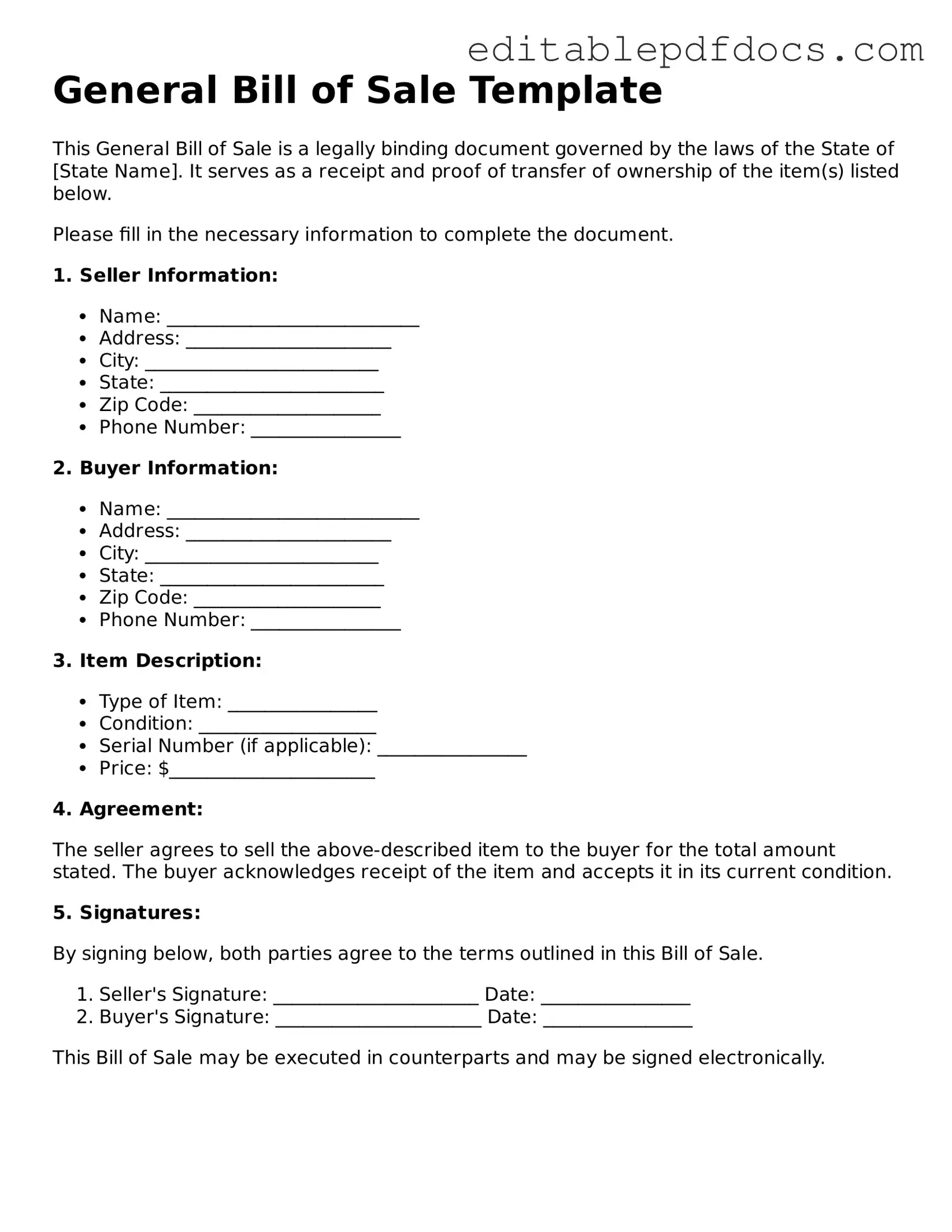Free General Bill of Sale Document
A General Bill of Sale is a legal document that serves as a receipt for the transfer of ownership of personal property from one party to another. This form provides essential details about the transaction, including the description of the item sold, the sale price, and the signatures of both the buyer and seller. To ensure a smooth transfer of ownership, consider filling out the form by clicking the button below.
Open Editor Now
